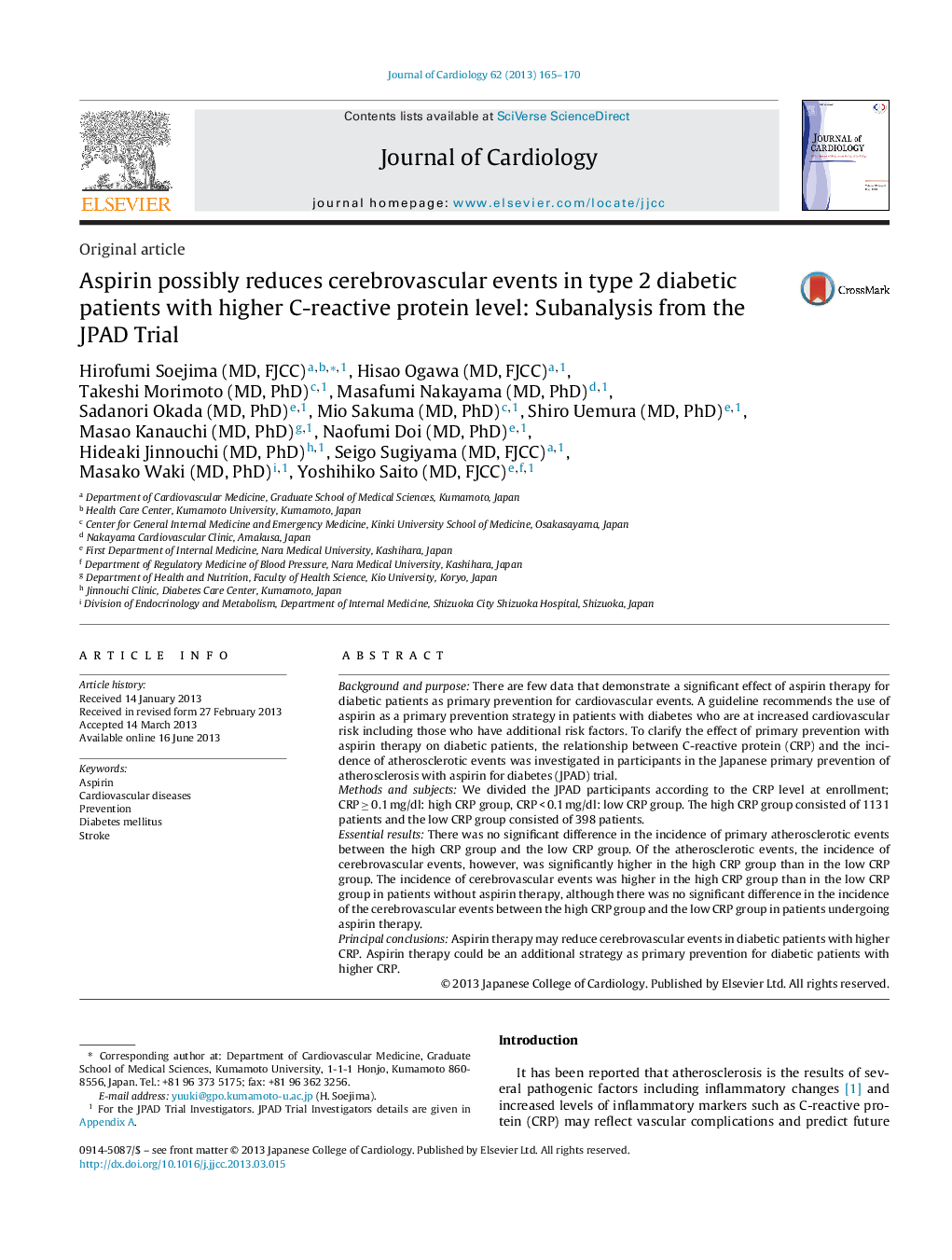| Article ID | Journal | Published Year | Pages | File Type |
|---|---|---|---|---|
| 5984311 | Journal of Cardiology | 2013 | 6 Pages |
Background and purposeThere are few data that demonstrate a significant effect of aspirin therapy for diabetic patients as primary prevention for cardiovascular events. A guideline recommends the use of aspirin as a primary prevention strategy in patients with diabetes who are at increased cardiovascular risk including those who have additional risk factors. To clarify the effect of primary prevention with aspirin therapy on diabetic patients, the relationship between C-reactive protein (CRP) and the incidence of atherosclerotic events was investigated in participants in the Japanese primary prevention of atherosclerosis with aspirin for diabetes (JPAD) trial.Methods and subjectsWe divided the JPAD participants according to the CRP level at enrollment; CRP â¥Â 0.1 mg/dl: high CRP group, CRP < 0.1 mg/dl: low CRP group. The high CRP group consisted of 1131 patients and the low CRP group consisted of 398 patients.Essential resultsThere was no significant difference in the incidence of primary atherosclerotic events between the high CRP group and the low CRP group. Of the atherosclerotic events, the incidence of cerebrovascular events, however, was significantly higher in the high CRP group than in the low CRP group. The incidence of cerebrovascular events was higher in the high CRP group than in the low CRP group in patients without aspirin therapy, although there was no significant difference in the incidence of the cerebrovascular events between the high CRP group and the low CRP group in patients undergoing aspirin therapy.Principal conclusionsAspirin therapy may reduce cerebrovascular events in diabetic patients with higher CRP. Aspirin therapy could be an additional strategy as primary prevention for diabetic patients with higher CRP.
